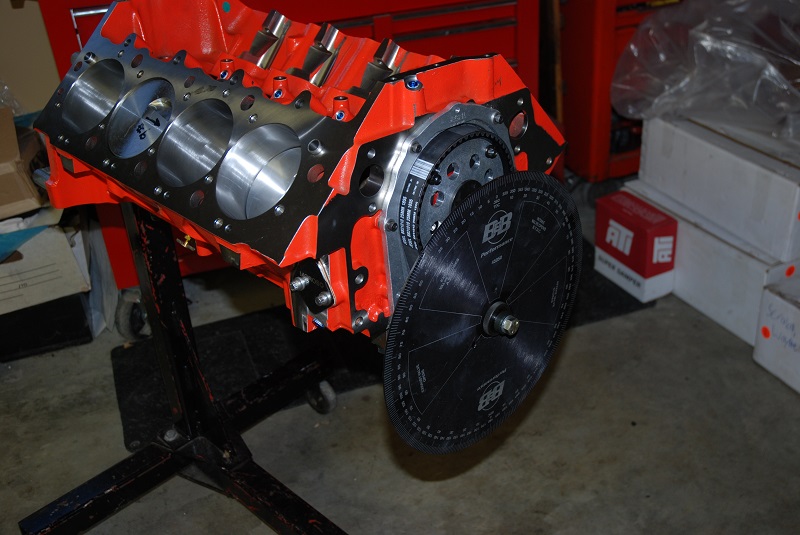
This 572 big block Chevy is bolted to the writer’s old (really old!) Lakewood tricycle stand. We’ve used it for more than 40 years (yikes). Yes, it’s a tough old piece, but tricycle stands tend to be wobbly as you move them around the shop. (Image/Wayne Scraba)
Every hot rodder and racer needs an engine stand. That’s no secret.
There are a lot of choices out there, and prices range from under $100 up into four digits. Given the sheer number of engine stands out there, what should you look for?
When it comes to engine stand construction, most are built from welded two-inch or 2-1/2-inch box tubing. Engine stand neck tubing should be robust. Some are actually reinforced. Engine stands can be painted or powder coated (sometimes paint proves to be the better coating choice because they’re so easy to repaint after getting beat up or covered in overspray).
Still, most engine stands look basically the same. So, what separates them?
Engine Stand Legs & Balance
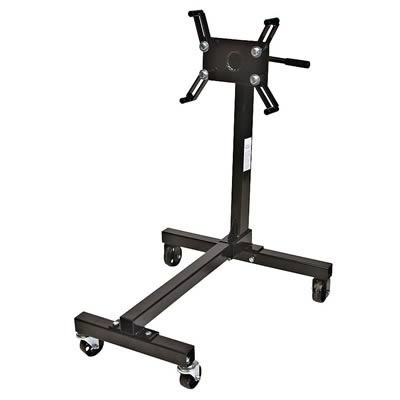
This Summit Racing stand is a good economical choice for an engine stand. It doesn’t fold easily, however it does have four casters for stability along with an easy-to adjust head (note the handle). (Image/SummitRacing.com)
Stands of old were tricycle in nature—three wheels was the norm. The problem with most tricycle stands is that they’re tipsy. A heavy engine on a tricycle stand is more prone to tipping, and a fallen engine stand usually spells disaster.
There’s one exception the tipsy tricycle stand and that’s the wide-based stand from Auto Dolly. On that stand, the wide legs are actually spread out like an equal triangle for optimum balance.
Weight Capacity
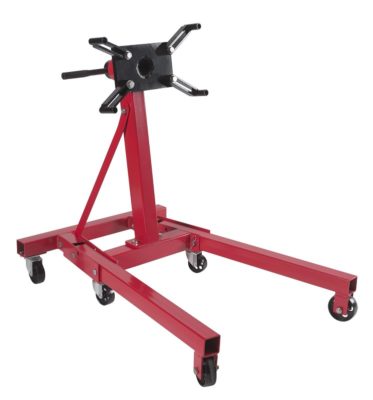
This Summit Racing product is a brute of a stand and is laid out much the same as many cherry pickers—six wheels, a 1-ton rating and a heavy duty ¾-inch thick still plate head. (Image/Summit Racing)
Another consideration when choosing an engine stand is weight capacity. The higher the weight rating, the better. If you’ve ever hung an all-iron big block off the end of a flexible stand, you know what we’re talking about. Sometimes, the length of an inline engine will also tax the stand. We like to see a 1,000-pound weight rating, at minimum.
Folding Stands
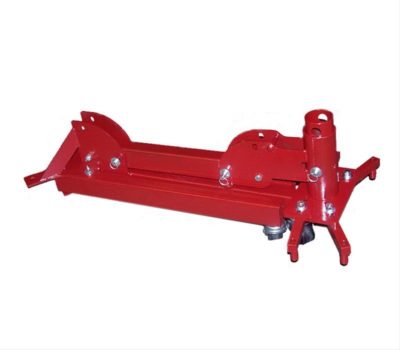
Here’s another neat feature of the Auto Dolly stand: It folds up tightly like a jackknife. Obviously, this is perfect if you don’t have much shop floor space. (Image/Summit Racing)
Folding stands are great because they can be tucked out of the way when not in use. Some folding stands are more compact than others. You’ll find that some like this 2,000-pound four leg stand from Summit Racing or a similar stand from Ranger fold away like a cherry picker. Only a couple of hairpins have to be pulled and the lock pins removed. Others require more disassembly. The Auto Dolly stand is incredibly small when disassembled.
Rotating & Locking Heads
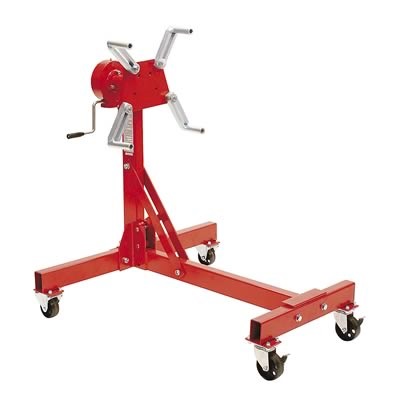
Here’s another Summit Racing stand. It’s more costly than the base model, but as you can see, it comes with a lot of standard features. The stand is easily folded to save shop space. The front casters swivel and lock and finally, the head is geared. This allows for very easy rotation while on the engine stand. (Image/Summit Racing)
Most modern engine stands incorporate some sort of rotating head. Look for stands that allow you to lock the head in place solidly. This functionality allows you to swivel the engine to a position that makes it easy to work on any part of engine comfortably. Some Summit Racing stands even have gear reduction heads with cranks. The 63:1 ratio gearbox allows you to spin the engine easily with very little effort.
Caster Size & Locking
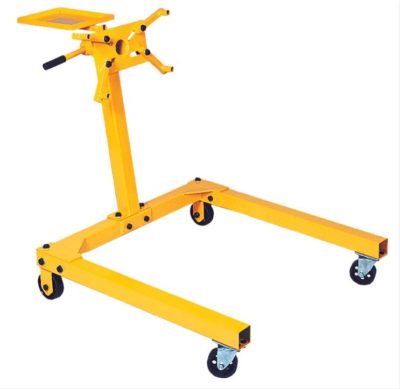
Four-leg stands offer great stability. (Image/Summit Racing)
Casters might seem like something you shouldn’t have to worry about, but bigger casters can make things easier in shops with imperfect or uneven floors.
It’s typical for the front casters to swivel and the back casters to be fixed in place. Some engine stands have swivel casters on all four wheels.
The large four-leg stands from Summit and Ranger actually have six casters. When getting an engine stand, be sure at least one caster can be locked to prevent the stand from moving while you’re performing engine work.
Access for Cherry Pickers
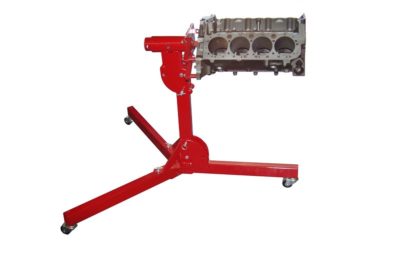
This stand from Auto Dolly makes use of a slick wide base tricycle layout. The design makes it nearly impossible to tip over. The stand is engineered so that you can not only work on the engine normally, but can also be tilted straight up. (Image/Summit Racing)
Watch for stands that don’t allow easy access for a cherry picker.
Many engine hoists are laid out with a sort of triangle shape on the legs and if the four-wheel engine stand front track is a tight fit between the engine hoist, you’ll likely run into problems.
Many of the wide track four-leg engine stands alleviate this issue because there’s enough room to aim the cherry picker legs alongside the engine stand legs. Please keep that in mind.

As you mentioned, the weight capacity is an important thing to consider when choosing an engine stand. My brother is starting to get into overhauling airplanes and is needing something to hold the engine. Are there different options en you are looking at aero engine stands?
[…] the stand is strong and durable enough to hold the weight of the engine you’ll be working on. There are a series of elements to consider. Look for stands made from high-quality materials such as steel or aluminium, with a weight […]